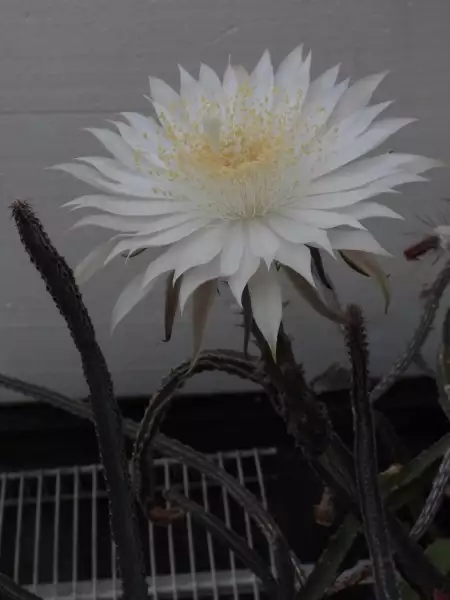Peniocereus greggii SNL1 7/7/21
The classic "Arizona Queen of the Night." The "SNL1" means that this is the first plant I collected. Actually, I collected the one fruit from a plant in front of a neighbor's house when I was in grad school in Tucson AZ. I planted the seeds from that fruit many years later. I managed to make some seeds from the mature individuals from that planting. Those seeds produced this plant and some others, and I've made more seed from them. The SNL1 (the "collection number") doesn't change for the lineal descendants of the original collection. I only had two flowers this year and I didn't succeed in making seeds. I need more flowering plants to get a reproducing population. (This, by the way, is the true definition of the word "species.") My plants are grafted. It's nearly impossible (for me, anyway) to keep them captive on their own roots in a pot, the "roots" being a tuber up to about 125 lb (about 60 Kg). I've tried it many times in the 50+ years since my original collection. Everything rots in a couple of years. Grafting works.
Another "by the way" - I have never found one of these in the wild, in spite of 50 years of on-and-off looking. If they are not flowering (one night a year!), they are almost impossible to see. The plant above the tuber is a tangle of brown stems the thickness of my little finger, always growing in the shade of some other gnarly plant. So, when you go looking for this plant, if during the day, your eyes are trying to cope with a super bright sun, so your pupils are almost closed. You're looking for a brown tangle in a brown tangle in the shade of a plant, while you are in bright sun. Of course, its even more impossible to see the plants at night, unless there is a white flower present, catching your eye. One night a year. Finding a fruit in the wild is also nearly impossible, in spite of its being red when ripe. A desert is a hard place to live. The fruit tend to be eaten well before ripeness by something passing by. (006/112)
<<Prev
Index
Next>>

